Planning your Oaxaca City trip? What a smart choice, as Oaxaca is one of Mexico’s most amazing destinations. This Oaxaca itinerary is going to help you maximize your time in this Mexican culture and foodie mecca.
Oaxaca City, the capital of Oaxaca State, encompasses all the things people imagine Mexico to be! From colorful festivals like Day of the Dead in early-November, to the amazing and regional Oaxacan Mexican cuisine, ancient history and ruins, it’s obvious why Oaxaca sits high atop so many travel bucket lists.
Oaxaca City has so much to offer, both within the city itself and on a day trip from Oaxaca. There are not one, but three UNESCO World Heritage sites in Oaxaca, as well as colorful colonial architecture, beautiful nature and artist communities — and this itinerary covers them all.
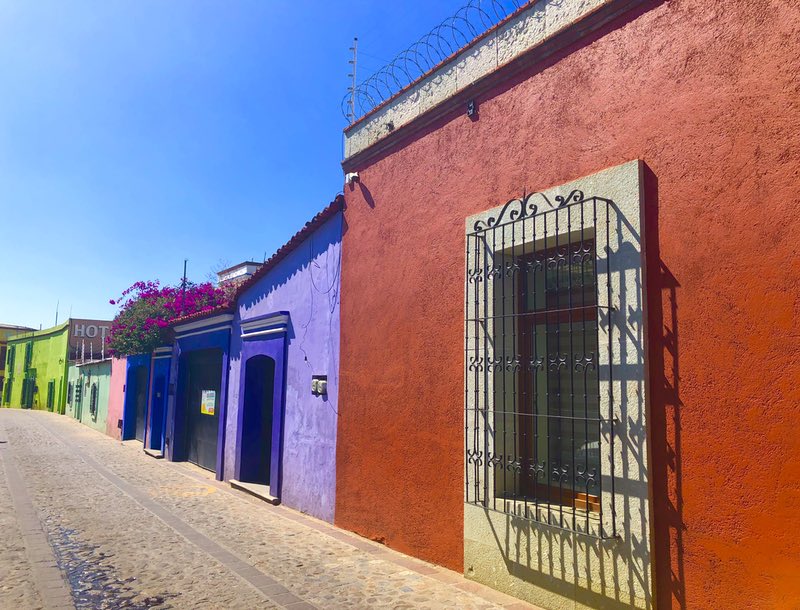
Let’s take a look at the ultimate Oaxaca itinerary to all the must see, must do, and must eat (and drink!) places in Oaxaca City, Mexico. Before we get to it, let’s clear up some Oaxaca travel FAQs, so you know how to best plan your trip.
Table of contents: ()
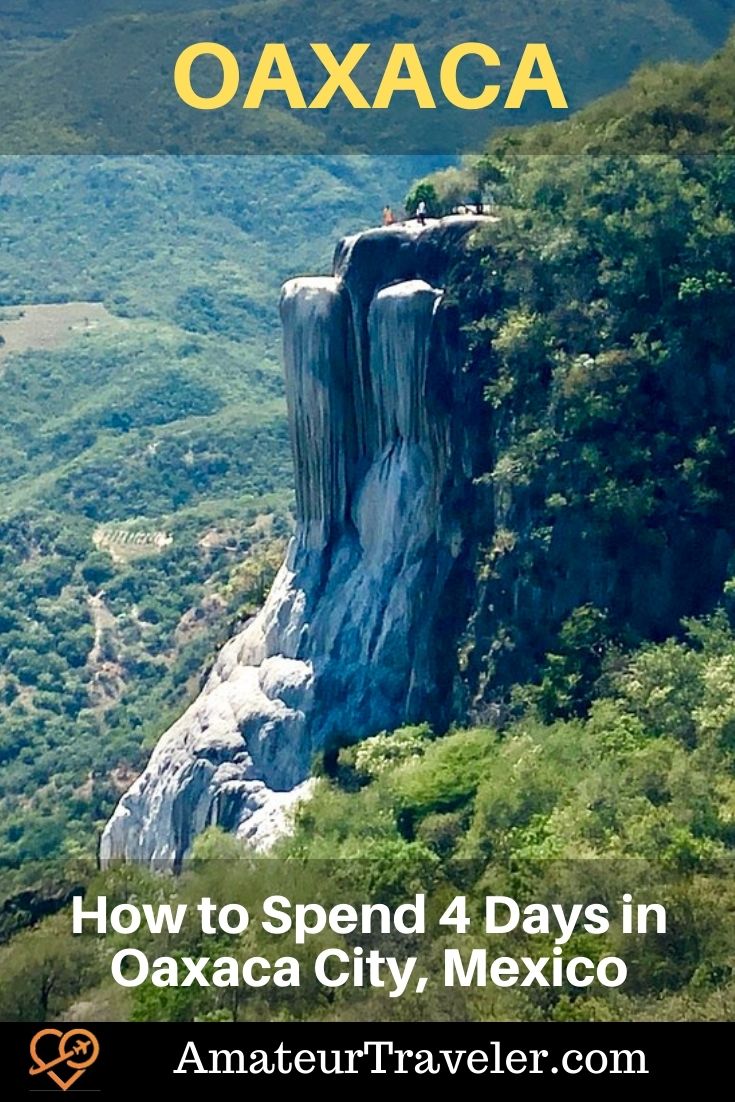

Day of the Dead – Oaxaca
Oaxaca Mexico: Frequently Asked Questions
Where is Oaxaca located?
Oaxaca State is located in a region called Southern Mexico. By car or bus, you can get from Mexico City to Oaxaca City in about six hours. The state of Oaxaca borders Chiapas State to the east, Veracruz and Puebla States to the north, and Guerrero State to the west.
To the south, you’ll find all the best beaches in Oaxaca, which sit on the Pacific Ocean. These include Puerto Escondido, Huatulco, Mazunte, Zipolite, and a few more smaller beach towns. For a good trip to Oaxaca City and the beaches, you’d want at least a week, so we’ll skip the beaches in this four day itinerary.
How do I get to Oaxaca?
There is an airport in Oaxaca, located only about 20 minutes from Centro Historico — Oaxaca International Airport (code: OAX). There are only one or two direct flights from the U.S., but you can easily find connecting flights through the Mexico City, Monterrey, Guadalajara and Tijuana Airports. You can also take a bus from Mexico City; the trip takes about six hours.
Do I need to rent a car in Oaxaca?
Renting a car in Mexico is the easiest way to see a lot with a limited time frame. If you want to follow this itinerary, a car will be your best bet. You can pick one up right in the Oaxaca Airport when you arrive.
What’s the Oaxaca weather like?
Oaxaca City has a desert climate, meaning hot, dry days and cool, crisp nights. The weather can actually vary by about 20°F from day to night, so don’t forget to pack jeans and a jacket to wear after the sun goes down.
What’s the best time to visit Oaxaca?
Though it’s a desert, it can rain heavily in Oaxaca from about May to September. To get the best Oaxaca weather, plan your visit during the months of October to April.
Now that you’re basically a Oaxaca, Mexico travel pro, let’s get to this Oaxaca itinerary, so you know how to plan your days.
Day 1: Centro Historico
Day one in Oaxaca will give you a chance to get to know the lay of the land within the city itself. The entire Oaxaca City Centro Historico, or downtown, is a UNESCO World Heritage Site, and there’s no shortage of things to do, see and eat.
Oaxaca City is well known for its prevalent street food culture. While you stroll around downtown, be on the lookout for one of Mexico’s national delicacies — chapulines. These small grasshoppers come served in a bag, and you snack on them throughout the day, like nuts or popcorn.
Oaxaca Markets
If grasshoppers aren’t for you, head to the Oaxaca City mercados (markets) to sample some non-insect foods. Mercado 20 de Noviembre has a food hall atmosphere, so you can go from vendor to vendor sampling whatever catches your eye. There’s also Mercado Benito Juárez and Mercado Central de Abastos, the largest market in Oaxaca.
While in the markets, enjoy these Oaxaca food specialties: tlayudas (AKA Mexican pizza), tamales oaxaquenos (tamales cooked in a banana leaf), and quesillo (AKA Oaxaca cheese, a delicious string cheese). For dessert, there’s nieves (sorbet), and tejate, a pre-hispanic chocolate and corn drink that’s served cold.
Oaxaca Zocalo
After you eat, make your way to the Oaxaca Zocalo, or Town Square, to see the Cathedral of Our Lady of the Assumption, which is the largest church in Oaxaca. The area surrounding the church, the Plaza de la Constitución (Constitution Plaza), is the perfect place to relax on a bench while people-watching.
Templo de Santo Domingo de Guzmán
Next, make your way to the nearby Templo de Santo Domingo de Guzmán, a 16th century Spanish church made in the Baroque style. While on the grounds, don’t miss the Oaxacan Culture Museum and Jardín Etnobotánico de Oaxaca (Oaxaca Botanical Garden).
This 2.5-acre garden is popular with visitors and locals alike. It is a serene place to enjoy Oaxaca’s native flora and fauna, with hundreds of plants, trees and succulents to see. Note: Due to the garden’s sensitive ecosystem, you must visit with a guided tour. They offer tours in English twice a week, for $100 MXN ($5 USD) per person.
Calle de Macedonia Alcala
For the next stop, make your way to the pedestrian-only Calle de Macedonia Alcala street. This colorful street is lined with art galleries, boutique shops, cool cafes, hip bars, restaurants and more. It makes a great place to take photos, shop and eat.
By now, you might be getting hungry again. Since you’re in Oaxaca, you’ll want to try the famous Oaxacan mole (pronounced moe-lay). While most are only familiar with mole negro (black mole), there are actually seven types of mole. Many traditional Oaxaca food restaurants serve at least three types, though usually not all seven.
Here are a few Oaxaca restaurants where you can sample authentic Oaxacan mole: Las Quince Letras, La Casa de la Abuela, Los Danzantes and Cabuche.
Day 2: Hierve el Agua & Mezcal Tasting
Hierve el Agua
If you’ve seen photos of anyone’s Oaxaca trip, you may have seen Hierve el Agua — a petrified waterfall and natural infinity pools. Hierve el Agua translates to “boiling water,” and while there’s not actually boiling water, there are thermal pools and a waterfall that’s not really there!
Located about 1-1.5 hours outside of the city, you’ll want to start heading to Hierve el Agua early in the day; some even head there at 6am. Also, there’s actually quite a bit to do at Hierve el Agua, which is why it gets nearly one whole day on your Oaxaca itinerary.
If you have a rental car, you can drive up the mountain to Hierve el Agua. You can also take the camioneta (shared truck), or hire a taxi driver for the day. This is the best option if you want to stay there all day, since the cab will wait for you, and you can leave Hierve el Agua whenever you’re ready.
As one of the most photographed places in Oaxaca, Hierve el Agua often gets very crowded. If you want those coveted photos without any people in them, head there early, as the crowds and tour buses all show up by about 9:30am.
Besides the natural infinity pools, which the locals say have healing minerals, the other famous Hierve el Agua site is the “waterfall.” The quotes around the word waterfall are there because it isn’t a waterfall; though it looks like one.
From far away, it looks as though water is cascading over the cliff, but this is just an effect created over centuries as mineral-laden water trickled down the cliff face. Over time, the minerals in this water accumulated, and it now looks as though there’s a constant flow of cascading water.
Strap on your hiking boots or sneakers, because you can hike down to the bottom of the “waterfall” to come face to face with it. There’s a shorter hike that doesn’t go all the way down to the base, but the full hike is worth it. In total, this moderate hike will take 3-4 hours, round trip.
When you’ve made your way back to the top of the mountain, you’ll be at the mineral pools. These pools are the perfect place to soak after your hike, and if your muscles hurt at all, the water will help alleviate the pain.
Mezcal
After hierve el agua, head back to the city to freshen up. Since you’re in Oaxaca, you’ll want to try some local mezcals, the most famous of all products made in Oaxaca. To learn about and sample artisanal mezcals, there’s no place better than Mezcaloteca. Note: Reservations required.
Casa Oaxaca
After that, a nice dinner will be in order. If you want to splurge, head to what many call one of the best restaurants in Oaxaca, Casa Oaxaca. For the best experience, make a reservation a few weeks in advance for one of the rooftop tables. Some other great, upscale Oaxaca restaurants options include Criollo, El Destilado and Catedral Restaurant.
Day 3: Mitla & More
Mitla
Begin Day 3 in the pueblo magico (magic town) of Mitla. Wondering, What is a pueblo magico? The Secretary of Tourism awards this prestigious title to Mexican small towns with noteworthy characteristics like unique natural beauty, historic significance and ancient cultural traditions.
San Pablo Villa de Mitla, or just Mitla for short, is unique as far as prehispanic archeological sites in Mexico are concerned. Rather than a large complex of tall pyramids and stone temples, Mitla’s buildings are shorter, with intricate carved stone done in elaborate, colorful geometric designs.
- Get a Car Rental
- Buy Travel Insurance
- Book Your Accommodation HERE
- Search for Great Tours HERE
- Get an eSim to be able to use your smartphone abroad.

In centuries past, Mitla served as a holy burial site for important nobles, warriors and clergy from the Aztec, Zapotec and Mixtec civilizations. The word mitla actually derives from the Nahuatl (Aztec) word mictlán, meaning “place of the dead,” or “the underworld.”
The Mitla Ruins are in the city of Mitla, located about an hour south of Oaxaca City. After you explore the buildings and surrounding town for about three hours, make your way back to Oaxaca City, but with some stops along the way.
El Rey de Matatlan
The first stop on the way back is El Rey de Matatlan, a distillery where you can see the whole mezcal-making process. On their free mezcal tour, you’ll learn about everything from harvesting the agave plant to the mezcal distillation process. At the end, you get to taste the final product, and they have many types of mezcal for sale.
Teotitlan del Valle
From here, head to the small Oaxaca pueblo of Teotitlan del Valle. This is just one of the Oaxacan craft towns; small villages famous for making just one artisan craft. In Teotitlan del Valle, they make what is perhaps the most famous of all Oaxaca crafts, tapetes, or hand-woven Zapotec rugs.
Many rug-makers and artisans open their facilities to tours, so you can see the whole process. It begins with hand-dying the wool, followed by watching master artisans use large looms to create these famous colorful rugs — of which no two are alike. After the tours, you can buy rugs, and many places also offer shipping.
Santa María del Tule
The final stop is the small, colorful town of Santa María del Tule, to see the Arbol del Tule. This is the largest tree, by diameter, in the world, and you want to make sure you get there with some daylight to spare so you can truly appreciate how huge it is!
The Arbol del Tule (AKA Tree of Enlightenment) is a 2,000-year-old Montezuma cypress tree, which is an astounding 46-feet in diameter with a circumference of 42 m (137.8 ft). For reference, it takes about 30 people with their clasped hands to wrap all the way around the Arbol del Tule tree.
Day 4: Monte Alban & Artisan Villages
Monte Alban
In total, there are three Oaxaca UNESCO World Heritage Sites: 1) Prehistoric Caves of Yagul and Mitla, 2) Tehuacán-Cuicatlán Valley, which spans both Oaxaca State and Puebla State, and 3) Historic Center of Oaxaca and Archeological Site of Monte Alban. This itinerary covers two of the three — with a visit to the archeological site of Monte Alban on your final day.
Located about 30 minutes from Downtown Oaxaca City, Monte Alban is known as the most important and best ruins in Oaxaca. You’ll want to head there as early as possible, to beat both the crowds, and the heat.
Located high atop a mountain, there’s no tree cover and very little shade at Monte Alban. Combine that with climbing the pyramids, and it can be a very sweaty start to the day. For this reason, arrive at 8am when they open, wear sunscreen and a sun hat, and bring a water bottle.
Make sure you give yourself enough time to climb all the structures and pyramids. From the higher points at Monte Alban, you get some gorgeous views of Oaxaca City and the other Oaxaca valley towns below, as this site is so high up in the mountains.
San Bartolo Coyotepec
After you finish exploring the Monte Alban Ruins, you’ll head to a few more Oaxaca art towns to buy authentic souvenirs to take home. The first town to stop is in San Bartolo Coyotepec, a small pueblo known for barro negro (black clay), the famous Oaxaca black pottery.
This pottery has been made since the 1950s, when Doña Rosa Real Mateo de Nieto figured out she could polish her pottery before firing it, giving the finished product a gorgeous sheen. Now, all these years later, Doña Rosa’s technique has helped put her pueblo on the map.
San Martin Tilcajete
The last art town is the fantastical land of Oaxaca’s alebrijes, San Martin Tilcajete.
Wondering, What is an alebrije (pronounced al-lay-bree-hay)? One of the most beloved forms of Mexican folk art, alebrijes are hand-carved wood figures, painted in bright colors. Alebrijes combine two or more animals into a hybrid creature that serves as a spirit guide. If you’ve seen the movie Coco, Pepita is an alebrije.
They were first made by Mexican artist, Pedro Linares, who gave them the name alebrije. His artistic legacy lives on in the town of San Martin Tilcajete to this day. In this pueblo, you can visit the shops where artisans make them — but be on the lookout for your favorite, as no two alebrijes are alike.
Final Thoughts: Oaxaca Itinerary
There really is a lot to do and see in Oaxaca, one of the most unique Mexico travel destinations. With four days, you can cover a lot of ground, especially if you’re renting a car in Oaxaca. Since Oaxaca public transportation isn’t great, a rental car will give you freedom to both see the city and the charming pueblos that surround it, for the full Oaxaca experience.
Will you use this Oaxaca itinerary to plan your trip? Which things to do in Oaxaca on this list caught your eye?
Oaxaca Podcast
Hear Shelly speak about Oaxaca in Travel to Oaxaca – Amateur Traveler Episode 721.







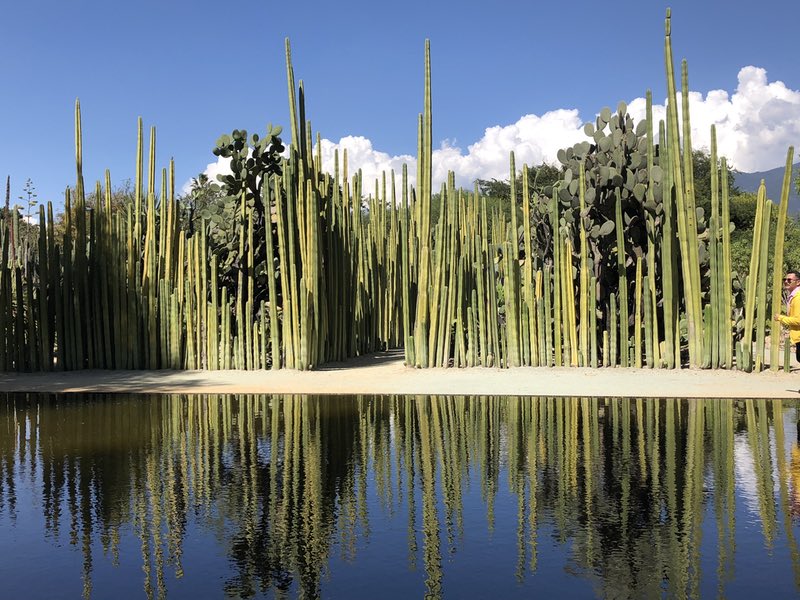


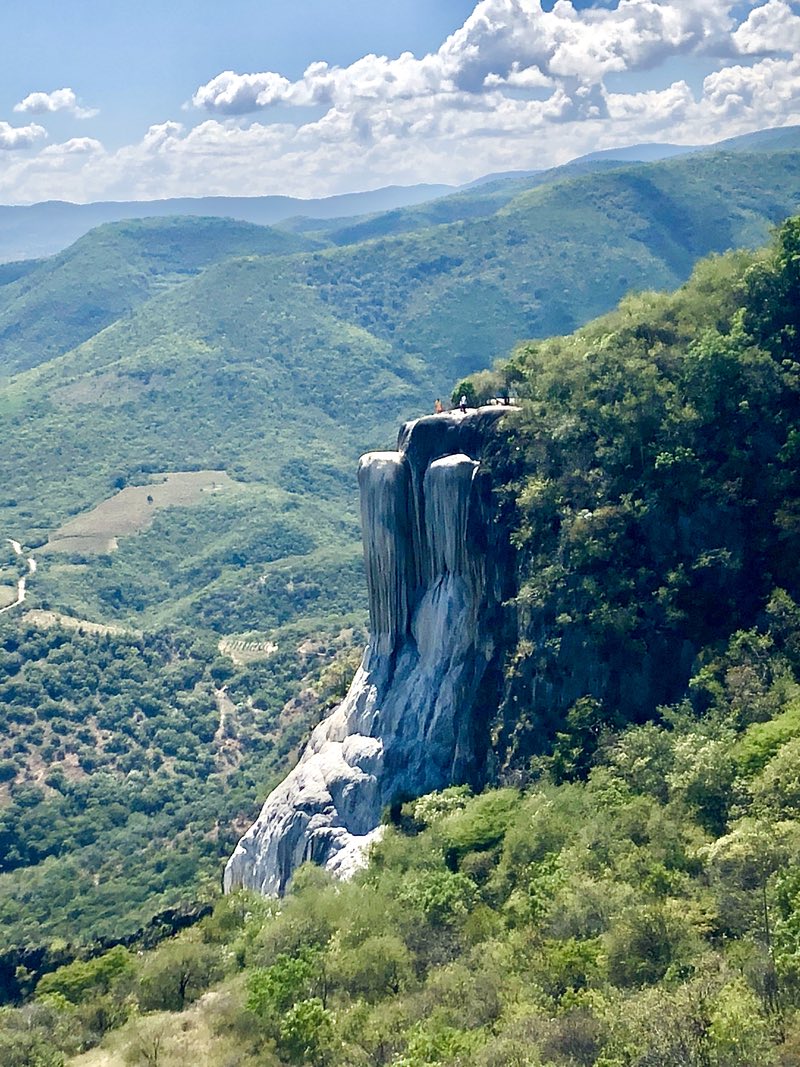






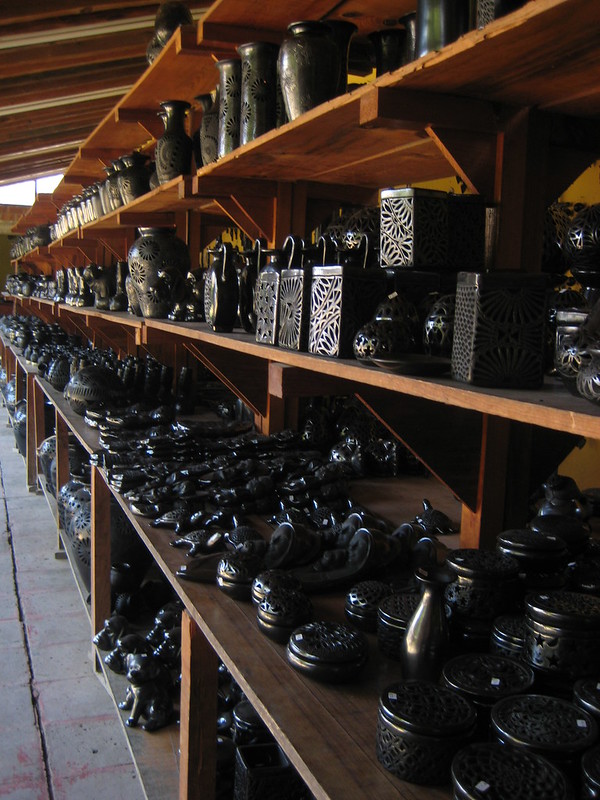
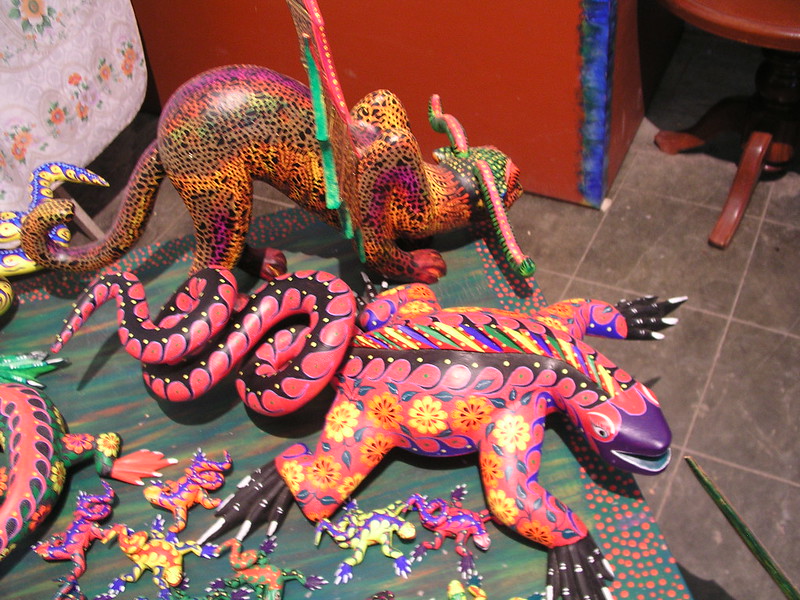

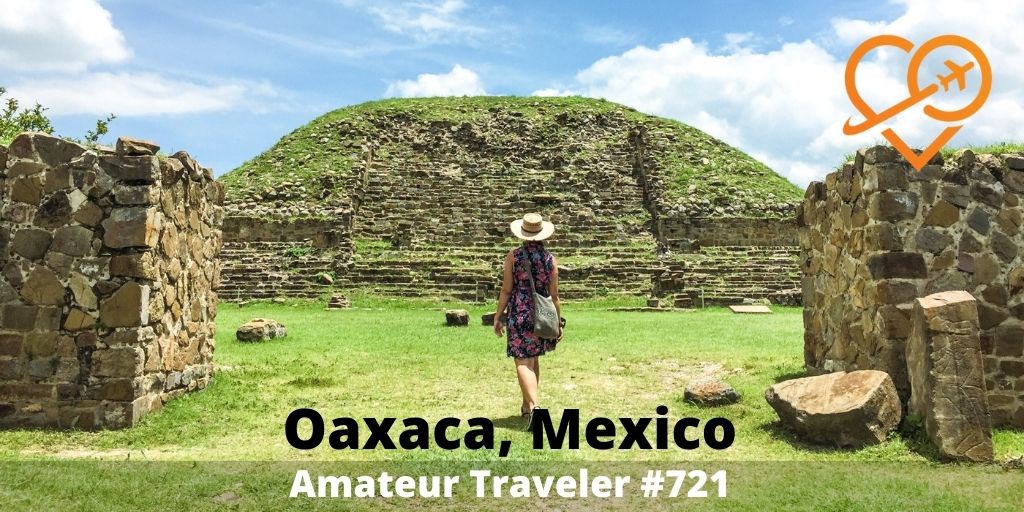
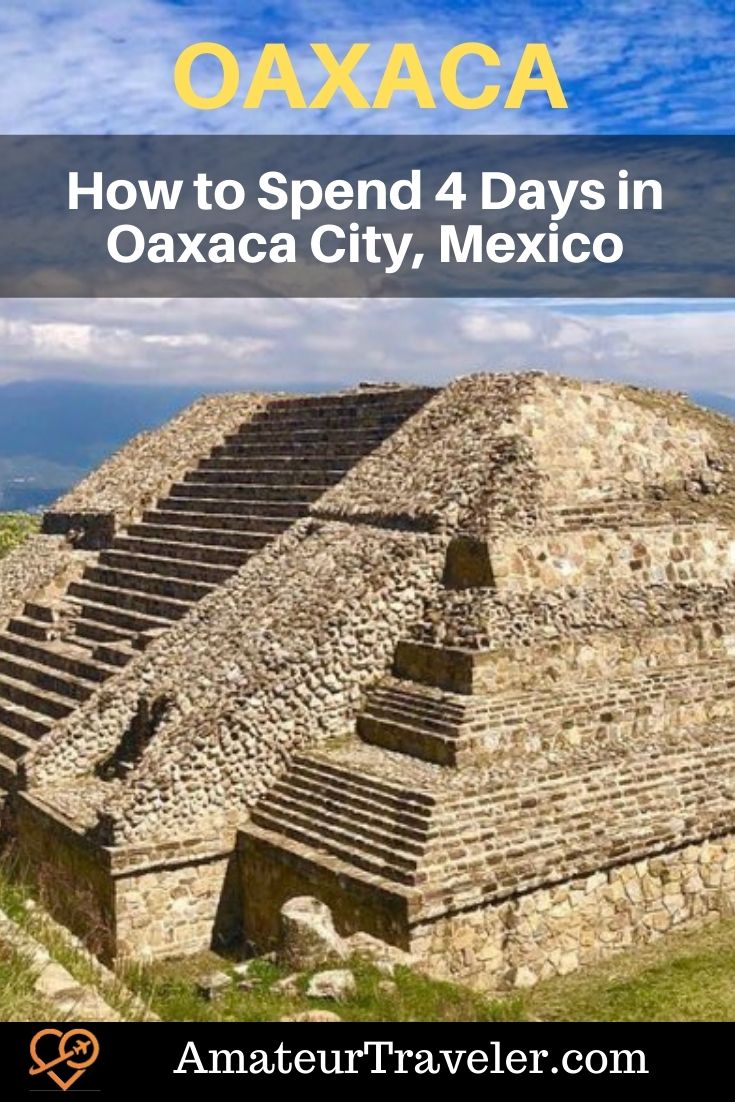
 Oaxaca, Mexico and Monte Alban – Video #79
Oaxaca, Mexico and Monte Alban – Video #79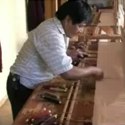 Oaxaca, Mexico – Felipe the Weaver (part 2) – Video Episode 47
Oaxaca, Mexico – Felipe the Weaver (part 2) – Video Episode 47 Trusting A Stranger in Oaxaca, Mexico – Solo Travel
Trusting A Stranger in Oaxaca, Mexico – Solo Travel Oaxaca, Mexico – Felipe the Weaver (part 1) – Video Episode 46
Oaxaca, Mexico – Felipe the Weaver (part 1) – Video Episode 46
